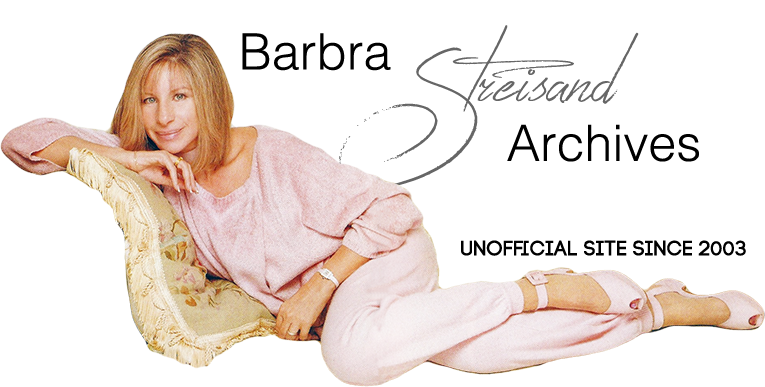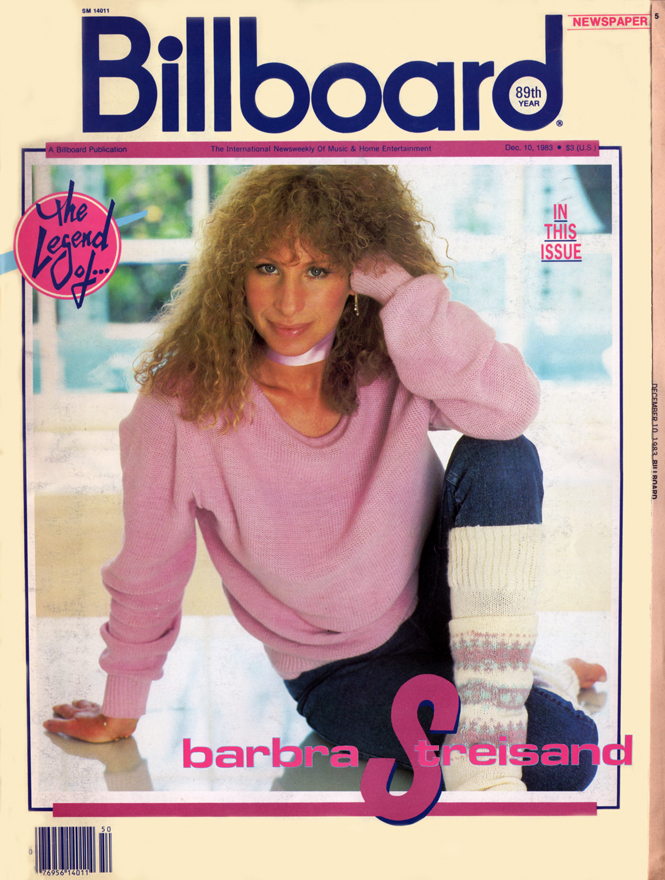
Billboard / page two
December 10, 1983
The Legend of Barbra Streisand (continued)
Page 1 | Page 2 | Page 3 | Page 4 | Page 5
"You give up something for that," Erlichman says. "You give up the front money. We never took big front money, We were offered a lot more of a guarantee from several of the other companies. But they weren't willing to give us creative control. When you break the mold, you have to make sure you have creative control because they'll try to make you into what they think you should be.
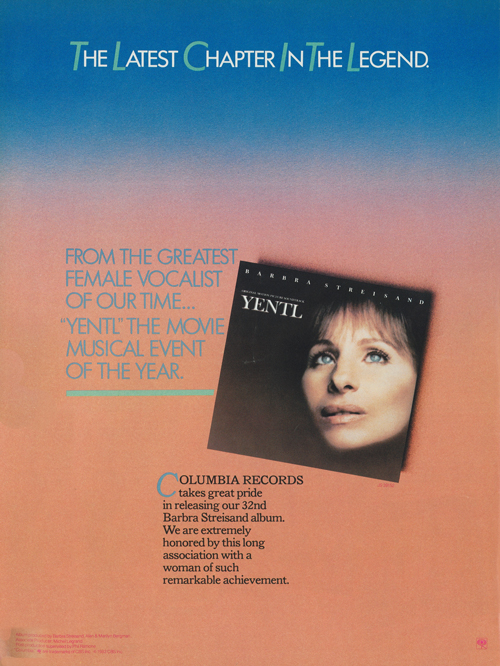
"That's how you show whether you believe in yourself or not. Only if her records sold would she make any money - and she had the final say about what went on her albums, so she was taking all the responsibility for that."
Columbia may not have been able to change anything on a Streisand album contractually, but they certainly tried to "suggest" changes. Peter Matz, the arranger/conductor Barbra brought in for her first album recalls that the going continued to be tough even during the recording sessions. "We had very small combinations, just four or five instruments. That was because Mike Berniker, the producer of the album, said, 'Look, we can't spend a lot of money on this, we don't know if this woman is going to sell records.' And poor Mike, he was walking a tightrope between the upstairs guys, me and Barbra. He would go upstairs and tell them, 'She's doing 'Who's Afraid of the Big, Bad Wolf?' and they would say 'What!' and he would come down to me an say, 'Do you have to do that?' And she'd say, 'Yes, goddammit, it's on the album!' Mike's job was a hard one, but he was very supportive ... and fought for her to have her way."
"The Barbra Streisand Album," released in February, 1963, was a groundbreaking recording—and, surprisingly to everyone except Marty and Barbra, perhaps—it was groundbreaking not only artistically but commercially as well. Within a few months of its release, it was the biggest selling album by a female artist in the country. It rose into Billboard's Top 10 and remained on the chart an extraordinary 101 weeks. It was chosen as Album of the Year at the 1964 Grammy Awards, and Barbra was named Best Female Vocalist for her startlingly melancholy version of "Happy Days Are Here Again."
Harold Arlen's liner notes for the back of the album proved quite prescient: "I advise you to watch Barbra Streisand's career. This young lady (a mere 20) has a stunning future. Keep listening, keep watching. And please remember, I told you so...."

"That first night I saw her at the Bon Soir," Marty Erlichman recalls, "when I talked to her in her dressing room I told her, 'Barbra, the first time out of the box, you're going to win every award that this business has to offer-the Tony, the Emmy, the Grammy, the Oscar." She looked at me and said, 'The Oscar?' and I said, 'That's going to be the biggest one, because you're going to be the biggest movie star of them all.' She giggled and said, 'I think I'm going to be a star too."
It wasn't long before the dream came true. But still, the road was never an easy one, Barbra's success in "I Can Get It For You Wholesale" came despite producer David Merrick's doubts about her. The show's director Arthur Laurents remembers that Merrick was unhappy with Barbra and the show's leading man Elliott Gould, whom she later married. "I had a battle every night with Merrick. He wanted to fire them because he thought they were both unattractive, and he didn't think Barbra was funny."
They both remained in the show, and it ran for nine months. All the time, Barbra was also appearing at the Bon Soir—finishing up her "Wholesale" performance at 11:30 and doing a 12:00 show at the club. It was a strategy Marty Erlichman thought was very important—he wanted Barbra to be seen by as many people as possible. One person who saw her was Jule Styne, who was, at the time composing the score for "Funny Girl," the David Merrick/Ray Stark Broadway musical based on the life of the Ziegfeld star ranny Brice. He was as enchanted by Barbra as Erlichman had been, and immediately thought she'd be perfect for the role.
He couldn't get anyone to listen at first. The producers wanted a star—they talked to Mary Martin, Carol Burnett, Ann Bancroft, Eydie Gorme, Shirley MacLaine — but each was wrong for one reason or another. Styne kept pushing for "this girl who sings down at the Bon Soir," and at his urging more and more of the show's creative team went down to see her. Finally, all were convinced—all except David Merrick. He had never seen her act at the Bon Soir, and he thought that she was too young to play the second act of the show, when Fanny Brice is an older woman. He was convinced to see her performance at the Bon Soir, and Marty Erlichman recalls that he sat through two shows. "At the end of the second show, he turned around and said, 'Tell Barbra I think she's aged.' " Merrick hired her to play Fanny Brice although he would shortly bow out of the production.
By the time "Funny Girl" opened on Broadway in March of 1964, it had become one of the most eagerly awaited theatrical events in a long time. Barbra Streisand had had an extraordinarily successful year in 1963, with three Top 10 albums, a sold-out national tour and a thrilling guest stint on the ''Judy Garland Show," which won her an Emmy nomination - the first time a guest appearance had been so honored.
"Everyone knew that Barbra Streisand would be a star, and so she is," wrote Walter Kerr in his review of "Funny Girl." Emory Lewis in Cue held nothing back: "Magnificent, sublime, radiant, extraordinary, electric-what puny little adjectives to describe Barbra Streisand."
Barbra's impact in "Funny Girl" can hardly be overstated. As Shana Alexander put it in Life magazine's cover story, "When Barbra opened on Broadway ... the entire, gorgeous, rattletrap show business Establishment blew sky high. Overnight critics began raving, photographers flipping, flacks yakking and columinists flocking. Thanks to such massive stimulation the American public has now worked itself into a perfect star-is-born swivet."
On Broadway, Barbra Streisand was allowed to be herself. "Funny Girl" went through extensive revisions, most designed to further highlight its electrifying star, And the public was dazzled. Marty Erlichman: "When the public got to see her, they dug her. It was more difficult to get her in front of the public because the people in our industry thought she was too unique, and the cliche that the world doesn't know what it likes but likes what it knows is even more prevalent in our business."
With her incredible success in "Funny Girl" (she made the cover of Time, and the former "misfit" in the thrift-shop clothes was now a national fashion trendsetter), it would have been natural for Barbra to assume that she would no longer have to struggle for the creative control that was so important to her. But she was about to enter an entirely new arena where she would have to fight all over again to be herself: television.
Unlike her recording contract, this one-for 10 CBS specials over 10 years-guaranteed her $5 million and full creative control. Barbra and Elliott Gould created EllBar productions, and Marty Erlichman served as Executive Producer. Their goal was to make "My Name is Barbra" as unique and groundbreaking as Barbra Streisand herself had been: there would be no guest stars, no comedy skits—just Barbra Streisand singing in various imaginative situations.
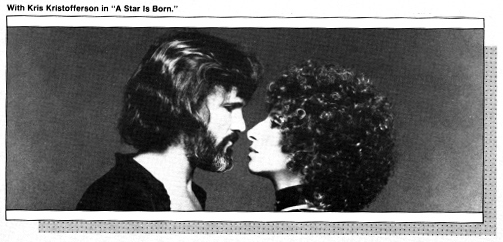
Once the show was completed, it was screened for a CBS executive. He called a luncheon meeting with Marty and Barbra's agents, and told them, ''You have ruined this girl's career. That show is going to do daytime ratings, is going to be blasted by the critics. Here you have this girl, people aren't even going to be able to pronounce her name, and she comes out and sings for 17 straight minutes before she even says hello to the audience! You should have had guests—Dean Martin and Frank Sinatra! But it's too late—the only thing I can suggest to try to save this show is to put the monologue first, and the opening segment last."
Marty says he ordered three martinis and told the exec he could tear up the contract if he wanted to—"because you're wrong. Daytime numbers? She'll double them. It will be the highest rated variety special this year. And reviews? She'll win every award."

"The morning after the show was aired," Erlichman says, "this same guy called and apologized." The show, of course, won extraordinary ratings and five Emmy Awards. The New York Journal American, the morning after the show's telecast, ran a front-page photo of Streisand with the headline, "Magnificent Barbra."
"My Name is Barbra" brought Streisand, who had been primarily a New York phenomenon, a national following and made her one of the biggest stars in the country. She took "Funny Girl" to London amid a blaze of publicity and praise, presented an equally successful sequel to "My Name is Brabra," and performed in New York's Central Park before 135,000 people—the largest crowd for a single performer up to that time.
The next step was Hollywood. "When I was a little girl," Barbra has said, "being a star meant being a movie star." And although she was one of the biggest recording and tv stars in the country, there was no guarantee that her talents would flourish across those 40-foot screens. The streets of Hollywood are littered with the bodies of flashes-in-the-pan who tried to conquer the movies and were unable to do it.
"I did her "Funny Girl" screen test," Herb Ross remembers. "She didn't do a scene, but we spent hours shooting her to test her in different lights, different make-ups, different hairdos. Because nobody knew how she was going to look on camera, including Barbra. I was with her the day she saw the first set of dailies. She was terrified—it was the first time she'd ever seen herself on film. Well, on screen she looked a miracle. How could anyone have known that her skin was going to have that brilliant reflective surface, that she would look radiant—that was just a wonderful plus. She was holding my hand real tightly, and as the tests unreeled, I could feel her relax and start to enjoy herself. And then she turned to me and said, 'This is just like going to the movies, isn't it?"
Barbra Streisand's film debut in "Funny Girl" was one of the most phenomenal in movie history- she became an immediate movie superstar. And Marty Erlichman's 1960 prediction came true in April 1969, when Barbra won an Academy Award as Best Actress in a tie with Katharine Hepburn. Even had she lost the award, though, she still would have gone on to become the only woman on the Top 10 Box Office list throughout the 1970s. The transformation of the Brooklyn Ugly Duckling into the Hollywood Swan was now complete.
While Streisand's movie career flourished—she received rave notices for "Hello, Dolly," "On A Clear Day You Can See Forever" and the non-musical "The Owl and the Pussycat"— her recording career was in a relative slump. She hadn't had an album in the Top 10 since "Je m'Appelle Barbra" in 1966, and her 1969 release "What About Today" — a halfhearted attempt at contemporary pop - rose no higher than No. 31 and never was certified gold.
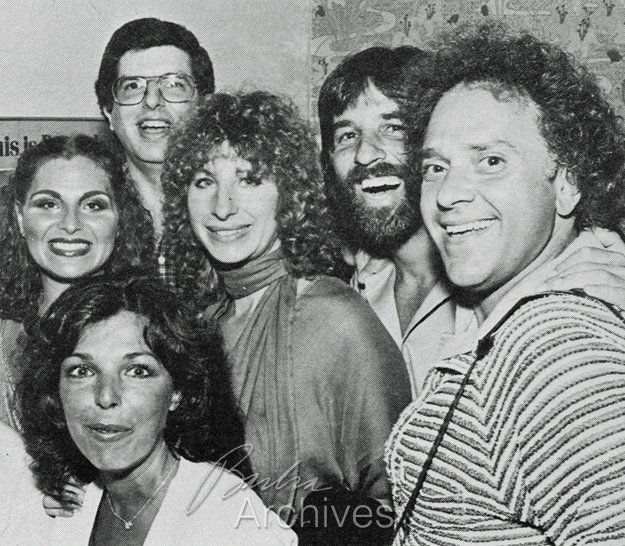
(Above: Backstage at Hollywood's Studio One after her sister Roslyn Kind's opening, 1979. With her, left to right, are Kind, Carole Bayer Sager, Marvin Hamlisch, Jon Peters and Neil Bogart.
"What About Today" indicated that Barbra Streisand wanted to contemporize her musical style, but wasn't quite sure how to go about doing it. Most people thought she was quite a bit older than she was—in 1969 she was just 27, but she was singing the songs of her parents' generation. Record producer Richard Perry wanted to youthen Streisand. "Here was the greatest vocal instrument of our generation not relating at all to popular contemporary music."
Perry convinced her to allow him to produce a truly contemporary album for her. It was another initiation for Streisand, another attempt to break new ground. But this time, it wasn't outside forces who were telling her she couldn't do it—she was unsure, frightened.
Richard Perry: "The night before our first recording session for the album "Stoney End," she called me up, freaking out. She said, 'I can't do it. This isn't me. I don't feel it.' So I tried my best to calm her down, I said, 'Trust me you're gonna love it ... it's gonna blow your mind as soon as we get into it a little bit.'”
"I got a call to write a song for 'A Star Is Born.' I had a meeting with Barbra and Jon and we went over the script and I suggested a song at the beginning, and they didn't like it. Then I suggested anotehr one a little further into the script, and they didn't like that. The third suggestion, they liked. Barbra said, 'You're not intimidated by this, are you?' I said 'No.' She said, "And you're not afraid to have bad ideas along with the good ones. I like that.'
"It was a very difficult time. Barbra was under a lot of pressure. The going got pretty tough at times. But I like to have creative control over my projects, so I understood her. And I was very impressed by her. I think she's a nice lady and I like her.”
— Paul Williams, Lyricist, "Evergreen"
"So the next day, the first song we did was Nilsson's 'Maybe.' All of Barbra's first takes are sheer excitement, listening to her sing the song for the first time with the whole orchestra, right? So, after we did the first take of 'Stoney End' we came in and listened to a playback. And she leaned over and whispered to me, 'You were right and I was wrong. But it's nice to be wrong.' It was certainly one of the thrills of my career."

Streisand's version of "Stoney End," a rocker by Laura Nyro, was terrific—and Columbia scrapped plans for a more traditional album to rush a "Stoney End" LP into release. The single and the album both entered the Top 10 in Billboard, and the single went to No. 1 in Los Angeles. Barbra Streisand was back on top, singing a completely new genre of music.
The public took this "new" Barbra Streisand to its heart, but many of the people who had been her adherents from the beginning were unhappy. Peter Matz was not impressed by the album. "They're all good songs, and it's consistent. 'What About Today' wasn't consistent. But I was bothered by the fact that so many of those songs were just duplicates of other people's versions.
"I remember she called me and asked what I thought of the album. I wanted to be diplomatic, so I said, 'Well, it's No. 10 this week.' And she said, 'But how do you like it?' 'I'm thrilled for you, you haven't had a solid hit in a long time.' 'No, no, how do you like it?'
"Well, I had to answer. 'Well, Barbra, to tell you the truth, I don't care for it very much.' And she said, 'But, Peter, it's No. 10 this week!' "
The success of "Stoney End" revived Barbra's recording career, and she has never since had a slump in record sales. She has sung pop, rock and disco, all with extraordinary success.
But Barbra Streisand is nothing if not restless, searching. Contemporizing her image on vinyl wasn't enough—she wanted to make a movie for and about today's rock scene. She liked the story of "A Star Is Born," and thought that it could be transferred wonderfully from the world of Hollywood to the current rock milieu.
The making of "A Star Is Born" was perhaps the most difficult period of Streisand's life. She and her paramour, Jon Peters, were producing, and Streisand had entered into a "collaborative" agreement with director Frank Pierson. The press ridicule was extraordinary; one magazine featured a painting of a totally bald Streisand along with the headline "A Star Is Shorn." The article mocked Streisand's pretensions to singing rock music and her hiring of her "boyfriend" as producer. Barbra, whose press had been fairly friendly up to this point, was flabbergasted. "So what if Jon was a hairdresser! A lot of producers started off selling dresses in New York. They said the same kinda thing to me. 'How can she act when she's just a singer?' No one is just anything. Who says I'm a singer? Who says I'm an actress? I'm a person. I wear many hats."
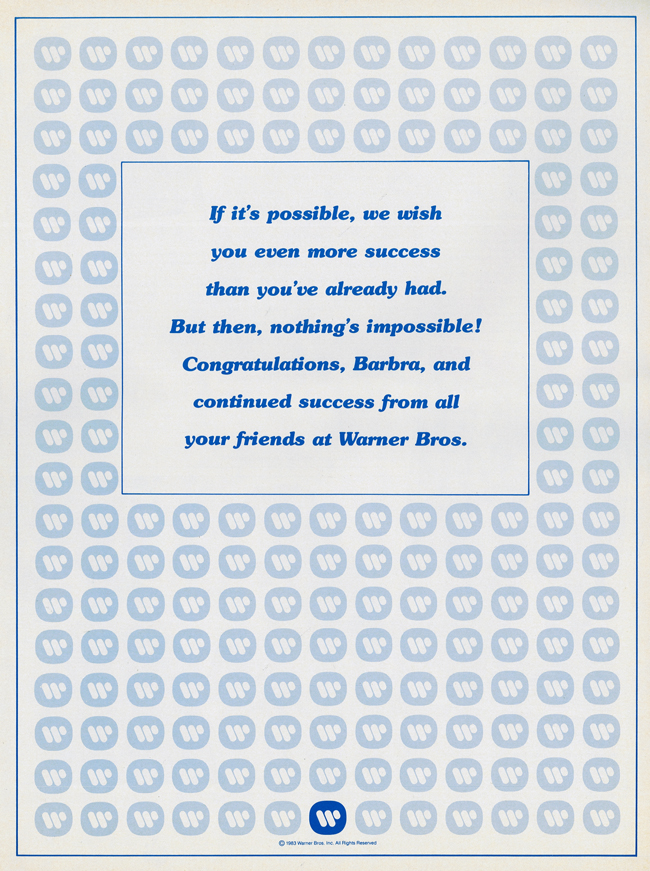
"A Star Is Born," upon its release in December of 1976, elicited a tremendous backlash from "establishment" critics who didn't think that Barbra Streisand should be singing this kind of music, making this kind of movie. Rex Reed chose it as the worst picture of the year and called it a "stupid, cacophonous and unnecessary rock and roll remake ... that drowns in a lot of noise and body odor. Barbra Streisand looked and sounded ridiculous trying to be Grace Slick and Kris Kristofferson looked like the werewolf of London stoned on cocaine and sounded like a dying buffalo. Her clothes looked designed by Lawrence of Poland, her hair looked fried in possum fat, the music was execrable ... a total disaster, about as contemporary as a 1965 student riot."
Most critics agreed with Reed—but the public didn't. "A Star Is Born" grossed nearly $100 million at the box office, the soundtrack of the "execrable" music sold eight million copies-the biggest-selling soundtrack until "Saturday Night Fever," and Barbra's "possum fat" hairdo became a fad which swept the country.
Once again, Barbra Streisand was ahead of her time—and if the critics weren't willing to be led, the public was. They weren't going to put any labels on Barbra Streisand-they still, in Marty Erlichman's words, "dug her."
"A Star Is Born" permanently cemented Barbra's position as a major contemporary pop artist. The single "Evergreen" went to No. 1, as did her 1978 duet with Neil Diamond, "You Don't Bring Me Flowers."
But Streisand had always been a balladeer of the first echelon. Pop music was now in the midst of a dramatic shift that would culminate in today's New Music: By 1979, disco was the most potent force in pop. It was still another stretch for Streisand, and one she pulled off magnificently. Her first effort, "The Main Event," rose to No. 3 on Billboard's chart and led the way for one of the most successful disco songs of the era: Barbra's duet with Donna Summer on "Enough Is Enough."
"Main Event" composer Paul Jabara, a longtime Streisand fan, had written Donna Summer's hit "Last Dance," and wanted Donna and Barbra to unite for a new song. He asked Barbra if he could come over and play it for her.
"The day before I went over," Jabara relates, "I asked Donna if she wanted to come with me to Barbra's for lunch. She immediately said, 'I'd love to!' When I called Barbra, her son Jason answered. I told him to ask his mother about bringing Donna to lunch with me. He screamed, 'Donna Summer!' It turns out Jason's the biggest Donna Summer fan in the world! So I owe it all to him."
Charles Koppelman, head of the Entertainment Company, and Gary Klein, the record's producer, put the package together despite the problem of two different record companies. Finally, the day arrived when Barbra and Donna were in the recording studio. Press reports breathlessly anticipated a battle of egos between "dueling divas," but that wasn't the case. Barbra and Donna respected each other a great deal. Donna was two hours late for the session because of a concert the night before. Barbra cracked, "I haven't waited two hours for anybody!" But, Donna says, she was "very understanding of it. She wasn't angry, she didn't act nasty, she understood - usually artists do."
Both superstars were nervous about meeting each other. "They were both intimidated," Jabara says, "and each couldn't understand why the other should be intimidated." But when they got down to singing the song, Jabara was enthralled. "There was Streisand, hands flaring, and Donna, throwing her head back—and they're both belting, sparking each other. It was a songwriter's dream. Seeing them on their stools opposite each other was so mind boggling, my head nearly turned 360°, like Linda Blair in "The Exorcist!"
The success of "Enough Is Enough" was mind boggling, too. It went to No. 1 in the U.S., England, Spain and Australia. The 12-inch disco version became the first such disk to go platinum.
In 1981, Barbra released her thirty-sixth album—and it became the most successful in her career. "Guilty" was a collaboration between Streisand and Barry Gibb, with whom she had wanted to work since seeing the Bee Gees in concert at L.A.'s Dodger Stadium.
"I was very nervous at first," Barry Gibb says. "We all had heard stories about how tough she is, and she is this enormous star. That's got to intimidate anyone. I didn't want to do it at first, but my wife told me to do it or she'd divorce me! I even called Neil Diamond to ask what it was like to work with her. He had nothing but glowing reports, so I felt a little less scared."
What began as a producing job turned into a total collaboration, with Gibb producing, writing all the songs, and dueting with Barbra on two of them.
"Working with her turned out to be wonderful," Gibb says. "She wanted my ideas and she gave me a lot of leeway—but she also wanted me to listen to her ideas, which I was glad to do. She was perfectly nice—a true lady in every sense of the word.
"And she was a hard worker. She'd work from 7 a.m. until late into the night—and during the breaks, she'd be working the script of "Yentl." But we did have to lock her up when the food came, because she always wanted to eat. We had to keep her away from the food so she'd keep singing!"
The Gibb/Streisand match was made in heaven. As Stephen Holden wrote in Rolling Stone, "One reason that the Streisand-Gibb team proves to be the most sensational artist-producer duo since Michael Jackson and Quincy Jones created "Off The Wall' is that both principals are basically traditional pop sentimentalists who complement each other in convenient ways. Barbra Streisand's steel-belted soprano gives me dramatic authority to Gibb's chromatic mini-arias that practically any other voice could."
"Guilty" became a phenomenal success, reaching No. 1 in twelve different countries. And for the first time in Barbra's career, there were three Top 10 singles from the album"Woman in Love," "Guilty" and "What Kind of Fool."
From the beginning of her career, Barbra Streisand had consistently met challenge after challenge with unprecedented success. Now, she was embarking on the greatest challenge of all, and putting herself to the ultimate test: she was preparing to produce, direct, write and star in a major motion picture. And even seasoned Streisand watchers weren't sure if she could pull this one off. The story of "Yentl" is covered in-depth in an accompanying article.
If one thing is clear about Barbra Streisand, it is that she is not afraid to take chances, to grow, to push herself to the limit of her creativity and endurance. For more than twenty years, she has consistently surprised and delighted us by using her incredible talents in novel and exciting ways. One thing that may be said about Streisand without fear of contradiction is that she will continue to fascinate for years to come everyone who is thrilled and moved by her extraordinary talents.
[ top of page ]
